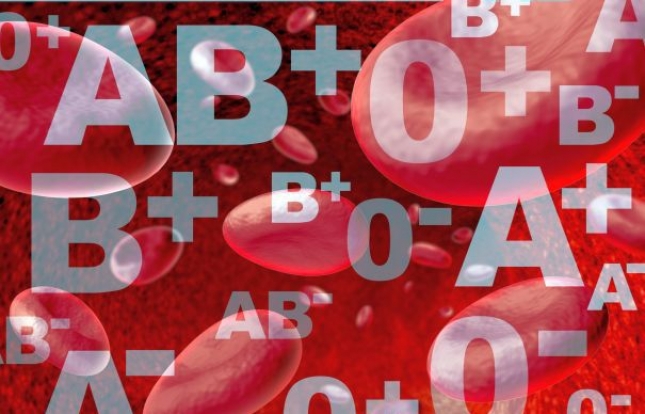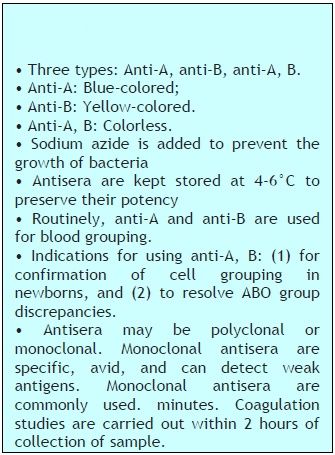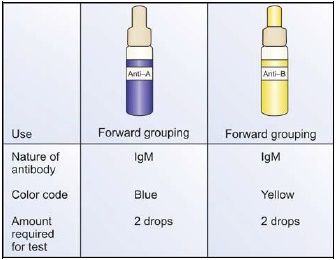DETERMINATION OF BLOOD GROUP BY SLIDE METHOD

Principle
Red cells from the specimen are reacted with reagent antisera (anti-A and anti-B). Agglutination of red cells indicates presence of corresponding antigen (agglutinogen) on red cells.
Specimen
Capillary blood from finger prick, or venous blood collected in EDTA anticoagulant.
Reagents
ABO antisera: See box 786.1 and Figure 786.1.


Method
- A clean and dry glass slide is divided into two sections with a glass marking pencil. The sections are labeled as anti-A and anti-B to identify the antisera (see Figure 786.2).
- Place one drop of anti-A serum and one drop of anti-B serum in the center of the corresponding section of the slide. Antiserum must be taken first to ensure that no reagents are missed.
- Add one drop of blood sample to be tested to each drop of antiserum.
- Mix antiserum and blood by using a separate stick or a separate corner of a slide for each section over an area about 1 inch in diameter.
- By tilting the slide backwards and forwards, examine for agglutination after exactly two minutes.
- Result:
Positive (+): Little clumps of red cells are seen floating in a clear liquid.
Negative (–): Red cells are floating homogeneously in a uniform suspension. - Interpretation: Interpret the result as shown in the Table 786.1 and Figure 786.2.
| Anti-A | Anti-B | Blood Group |
| + | - | A |
| - | + | B |
| + | + | AB |
| - | - | O |

Slide test is quick and needs only simple equipment. It can be used in blood donation camps and in case of an emergency. However, it is not recommended as a routine test in blood banks since weakly reactive antigens on cells on forward grouping and low titer anti-A and anti-B on reverse grouping may be missed. Also, drying of the reaction mixture at the edges causes aggregation that may be mistaken for agglutination. Results of slide test should always be confirmed by cell and serum grouping by tube method.
- Comment
- Posted by Dayyal Dg.